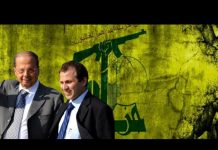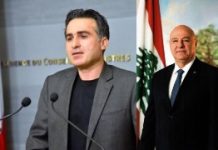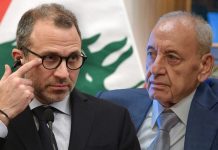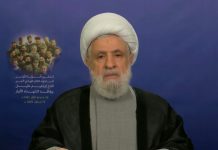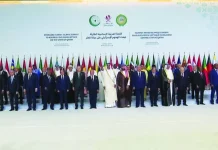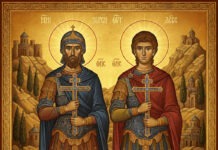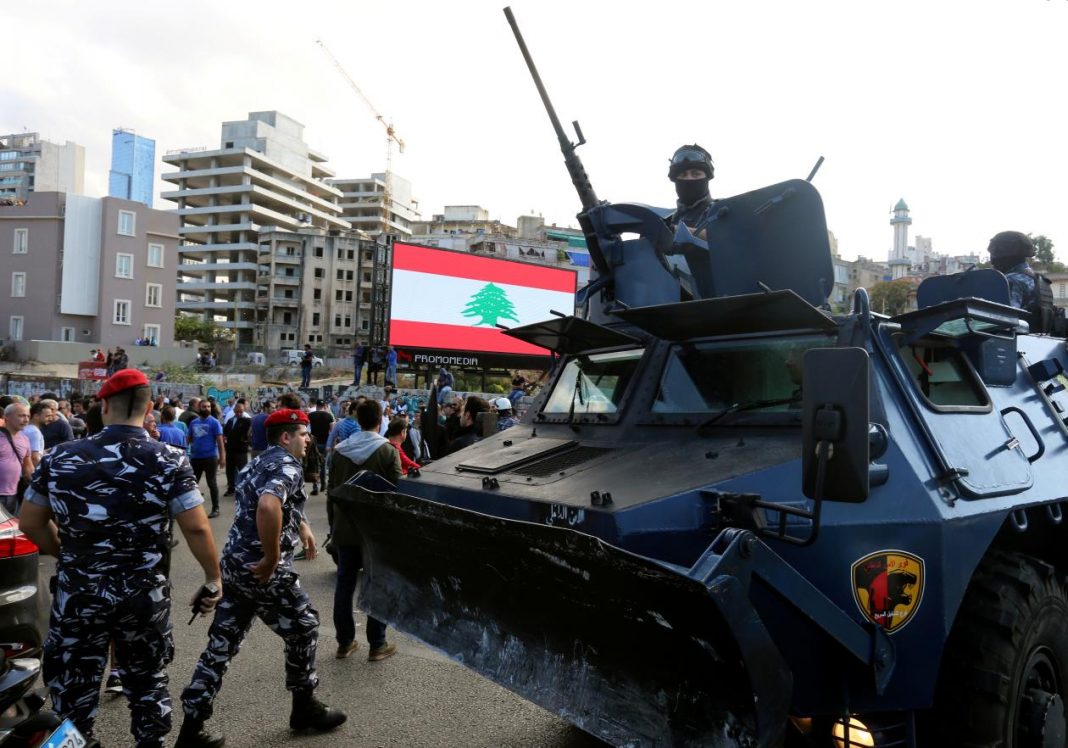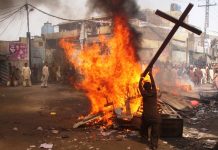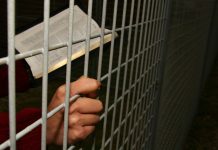The True Value of Lebanon’s Armed Forces
روبرت رابيل: القيمة الحقيقة للقوى اللبنانية العسكرية الشرعية
Robert G. Rabil/The National Interest/December 03/2019
The LAF has been the most respected institution in confessional Lebanon. It is regarded by many as the defender of the country and the patriotic glue that binds the various confessions whose national aspirations have been often at cross purposes.
Alongside a campaign to push for a war with Iran, there is a parallel campaign to undermine Iran’s proxies is equating the Lebanese Armed Forces (LAF) with Hezbollah. Though the armed forces need to answer and act on some legitimate concerns, this pairing is not only erroneous but also dangerous because it undermines the only institution stabilizing Lebanon.
Patched together into a quilt of various confessional communities, Lebanon gained its independence from France in 1943 and based its national identity and political system in a National Pact (al-Mithaq al-Watani). In fact, a Maronite-Sunni alliance churned out the pact whereby political power would be distributed along religious (confessional) lines and Lebanon’s identity would be characterized by an “Arab face” and manifested by the slogan “No East, No West.” Other communities, especially the Shi’a community given its demographic significance, had little, if any, role in the process of concluding the National Pact. Evidently, the National Pact helped bring about under special circumstances communal conciliation, and to some extent unity. But it neither fostered nor forged a national identity. It was based on a compromise guided by the false assumptions that Muslims would “Arabize” the Christians while Christians would “Lebanonize” Muslims. Lebanon’s weak national identity and quasi-democratic system made the country a lightning rod for almost all political currents sweeping the Arab world since the Arab defeat in the 1948 War and through what Melcolm Kerr famously described the Arab Cold War.
Significantly, though it was influenced by the country’s confessional system, the Lebanese army, known as the Lebanese Armed Forces (LAF), stood out as an institution welding a nationalist esprit de corps. The LAF has been the most respected institution in confessional Lebanon. It is regarded by many as the defender of the country and the patriotic glue that binds the various confessions whose national aspirations have been often at cross purposes.
Admittedly, since Lebanon’s independence from France in 1943, the LAF has sought to remain a neutral actor on the domestic and foreign levels. More specifically, it sought to serve as a neutral arbiter guaranteeing free elections and political stability, while at the same time maintaining its distance from regional problems, especially the Arab-Israeli conflict. The LAF, for example, remained in its barracks during Lebanon’s brief civil war in 1958, and it neither participated in the 1967 War nor in the 1973 War.
Significantly, following the defeat of the Arab armies in the 1967 War, the Palestinian Liberation Organization (PLO), led by Yasser Arafat, increased its militant activities targeting Israel from Lebanon. Broadly speaking, whereas the Christian leadership opposed PLO actions, the Muslim leadership, led by pan-Arabists and leftists, supported the PLO. This polarized the country into two diametrically opposed camps and led to skirmishes between the army and the PLO’s military wing Fatah. Conceding to pressure from Arab leaders, the Lebanese government signed the 1969 Cairo agreement, which essentially allowed the PLO to engage in armed struggle against Israel.
Subsequently, the influx of PLO fighters into Lebanon from Jordan in 1970 following their botched attempt to remove the Jordanian monarch further deepened the country’s polarization. Before long, the country descended into civil war in 1975 and the army disintegrated along confessional lines. In the summer of 1976, Syrian forces entered Lebanon as an Arab Deterrent Force to stop the fighting. In 1982, Israel invaded Lebanon and evicted the PLO from Beirut to Tunis. Subsequently, Israel withdrew from Lebanon but not before setting up and occupying a buffer zone on its border. Meanwhile, several attempts were made to restructure the army and rehabilitate its impartial image. But these attempts were doomed to failure insofar the civil war continued relentlessly until Iraq’s invasion of Kuwait in 1990. Seeking the participation of Syrian troops in the U.S.-led international coalition to extract Iraq from Kuwait so as to legitimize the coalition in the eyes of Arabs, Washington green-lighted the complete occupation of Lebanon by Syrian troops. Lebanese troops who resisted the Syrian onslaught were murdered and dozens of army officers and soldiers, following their surrender, were shot point-blank in the courtyard of the Lebanese Defense Ministry in Yarze. Those who were spared were taken to Syrian prisons and are still unaccounted for by the Syrian regime.
The end of the civil war was legitimized by the signing of the Document of National Understanding, known as the Taif Accord, which introduced significant amendments to the Lebanese constitution. The Accord shaped the political system of the Second Republic.
The thrust of political reforms revolved around conferring equal powers to the three high posts in the land, the presidency (Christian), the premiership (Sunni) and the speakership (Shi’a). The other sections dealt mainly with building the armed forces to shoulder their responsibilities in confronting Israeli aggression and taking the necessary measures to liberate all Lebanese territory from Israeli occupation. In line with the Taif Accord’s emphasis on the Lebanese-Syrian special relations, the Syrian and Lebanese presidents in 1991 signed the Treaty of Brotherhood, Cooperation, and Coordination and the Lebanon-Syria Defense and Security agreement, which essentially institutionalized Syrian occupation over Lebanon.
The Syrian regime, through its mukhabarat (intelligence), ruled Lebanon on the basis of a delicate balance between a divide and rule policy and maintaining to more or less a confessional equilibrium in favor of supporting Syrian loyalists. The LAF under Syrian occupation was robbed and depleted of its raison d’etre and power, respectively. Meanwhile, thanks to Iranian and Syrian support, the Shi’a Islamist party Hezbollah enhanced its military power and sanctified its role as a resistance movement against Israel’s occupation of southern Lebanon. Both Lebanese and Syrian authorities legitimized Hezbollah’s role, thereby turning the Lebanese army an obsolete force.
To be sure, Shi’a ascendency in Lebanon, as led by pro-Syrian Hezbollah, was frowned upon by Muslim and Christian parties, which resented Syrian hegemony in the country. In response, attempts focusing on the army and intelligence and security apparatus were made to counter Hezbollah’s growing power. In particular, the Internal Security Force, under Prime Minister Rafiq Hariri (1992–1998 and 2000–2004) was enlarged, better equipped, and put under the direct control of the prime minister. Trained and equipped by France and the United States, the Internal Security Force was staffed mainly by Sunnis, heightening sectarian bias within state institutions. On the other hand, General Security Directorate was supported by pro-Syrian politicians and often was charged with colluding with Syria. In the meantime, the army experienced selective recruitment, reversing the historic pattern of maintaining a confessional balance within its ranks.
Israel’s withdrawal from Lebanon in 2000 and the U.S. invasion and occupation of Iraq in 2003 upended the regional dynamics in general and Lebanon’s political dynamics in particular. Opposition to Syrian presence in Lebanon grew and peaked with the murder of Hariri in 2005, allegedly by Syria and Hezbollah. Many Lebanese took the street claiming for their independence from Syrian hegemony and launched what came to be known as the Cedar Revolution. This led to the Syrian withdrawal from Lebanon and the collapse of the Second Republic. Also, it split the country into two camps, one anti-Syrian, led by the Hariri Future Current and known as the March 14 movement, and the other pro-Syrian and known as the March 8 movement, led by Hezbollah.
Interestingly enough, during the turmoil, acting Prime Minister Omar Karami ordered the LAF to break up the demonstrations. Commander of the Army, Michel Suleiman, defied the order and sought to restore the army’s neutral role. In fact, since the withdrawal of Syrian troops from Beirut attempts have been made to restore the LAF as the flame of national unity. Liberated from Syrian yoke, the LAF has worked hard to restore its neutrality, professionalism and non-bias sectarianism. The LAF resumed its build-up on the basis of an equitable Christian-Sunni-Shi’a recruitment while walking a fine line amidst strong internal divisions between the two rival blocs. During the 2006 summer conflagration between Hezbollah and Israel, the LAF remained largely a spectator, focusing on relief efforts and maintaining law and order. Nevertheless, the LAF lost forty-nine soldiers from Israel’s fire. It’s noteworthy that whereas Israel accused the LAF with providing coordinates to Hezbollah to fire an anti-ship missile at an Israeli corvette, Hezbollah accused the LAF of close cooperation with the U.S. leadership and military.
Significantly, a number of classified documents leaked by Wikileaks revealed that the Lebanese defense ministry and government cooperated and coordinated with the U.S. government to curb the power of Hezbollah. Moreover, leaders from across the country’s confessions virtually aspired that Israel would defeat Hezbollah. In a document dated July 17, 2006, Druze leader Walid Jumblatt stated that “although March 14 must call for a cease-fire in public, it is hoping that Israel continues its military operations until it destroys Hizballah’s military capabilities . . . Then the LAF can replace the IDF once a cease-fire is reached.” A document dated August 7, 2006, revealed that Christian leaders meeting with Ambassador Jeffrey Feltman and Assistant Secretary Charles Welch argued that “The Lebanese government will need to be in a position of strength to deal with Hizballah once the conflict is over . . . To this end, they would support a continuation of the Israeli bombing campaign for a week or two if this were to diminish seriously Hizballah’s strength on the ground.” In the meantime, as revealed by a document dated August 8, 2006, the Defense Minister Elias Murr, confident about a rapid LAF deployment, “stated clearly that the LAF was prepared to hit back at Hizballah if they attempted to fire at Israel or tried to draw Israeli fire by placing launchers near to LAF positions.” Moreover, a document on the same day revealed that Murr “claimed that LAF forces had stopped and seized a truck carrying Hezbollah missiles.”
These documents show that the LAF did not cooperate with Hezbollah; rather it demonstrated the LAF’s indispensable and alternative force to stability and Hezbollah. No sooner, the litmus test of the imperative need of the LAF took place in 2007 when a Salafi-jihadi organization Fath al-Islam took over the Palestinian refugee camp of Nahr al-Bared. Lacking equipment and ammunition, the LAF, despite its vigorous spirit, was virtually incapacitated. Thanks to a swift American supply of weapons and ammunition, the LAF prepared to storm the camp despite a warning from Hezbollah’s leader Hassan Nasrallah that the camp is a “red line.” Following bloody pitched battles the LAF reclaimed the initiative against and defeated Fath al-Islam. The battle cost the LAF 166 soldiers and dozens wounded. This was the high price that the LAF had to pay. Still, it was a price that elevated the LAF to a popular level beyond reproach or sectarian politicking. Since then, seeing the benefit of the LAF as a force against Al Qaeda and its sister jihadi organizations, Washington began to systematically equip the LAF with defensive weapons and train some of its officers.
This led to a nuanced and contradictory relationship between the LAF and Hezbollah. The popular enhanced stature of the LAF following its costly defeat of the Salafi-jihadi organization Fath al-Islam, coupled with the Lebanese government’s need for U.S. support, forced Hezbollah to look askance at, yet not disrupt, the U.S. training and arming of the LAF. The LAF and Hezbollah, though in principle integral parts of Lebanon’s societal fabric, perceived each other a rival and a threat to its raison d’etre.

